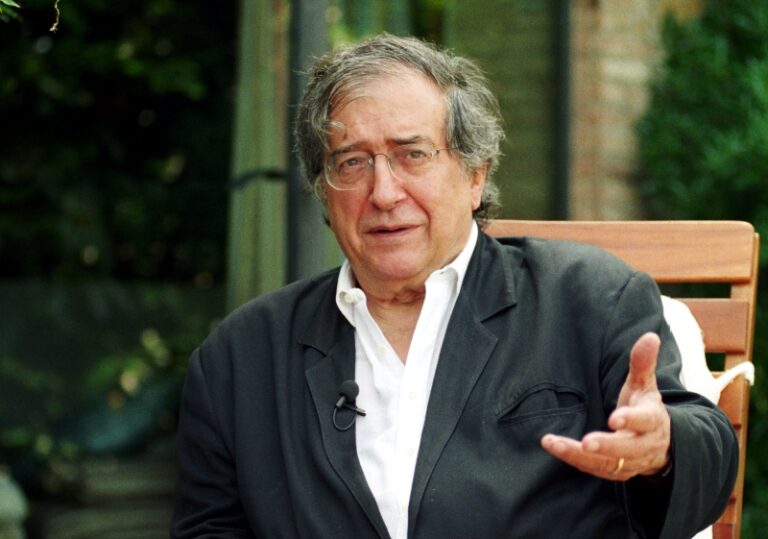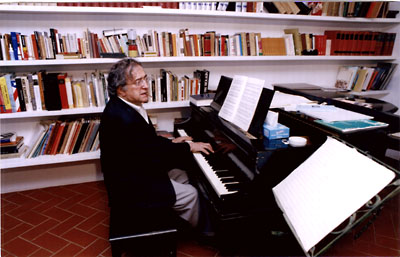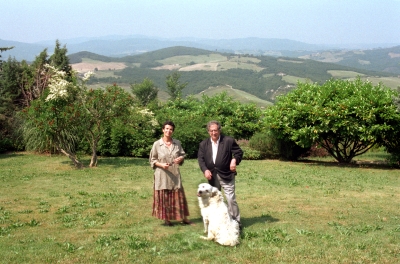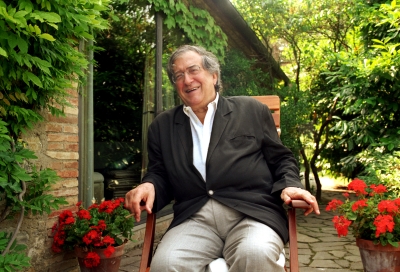The 8th
LaureateMusic
Luciano Berio

The title of Luciano Berio’s 1974 composition Points on the Curve to Find… might serve as a metaphor for his entire career. His work seems to present a continuous attempt to find a path through a labyrinth of possibilities: musical,phonetic,electro-acoustic,textual,theatrical,ethnic,anthropological. Berio was a pioneer of electronic music,but also his Sequenzas extended instrumental techniques and broke new ground in notation. In massive works such as Sinfonia,1968-69,and Laborintus II,1965,he demonstrated both his powers as an orchestrator and his highly inclusive and eclectic musical style. Text and song remain at the heart of his music,and he is also capable of great lyrical simplicity,such as in the popular Folk Songs,1973,and Ofanim,1988.
Biography
At the climax of Part III of Sinfonia,1968–69,Luciano Berio speculates whether music has the capacity to alter life,with the words: ‘But all this can’t stop the wars,can’t make the old younger,or lower the price of bread!’ He answers his own question with a quotation from Samuel Beckett: ‘there must be something else. Otherwise it would be quite hopeless. But it is quite hopeless.’
Berio first stamped his presence on the European avant-garde scene in the late 1950s,especially through his pioneering electronic music. He and another leading Italian composer,Bruno Maderna,had founded the Studio di Fonologia Musicale at Milan Radio in 1954,and under Berio’s direction during the next five years it became one of the leading electronic music studios in Europe.
Berio’s attempts to reconcile musique concrète (the use of recorded sound to create a collage-like piece) with the synthetically produced sounds of electronic music resulted in the celebrated tape pieces Thema/Omaggio a Joyce,1958,and Visage,1961. Both pieces featured the singer Cathy Berberian,whose extraordinary vocal abilities lent them a strong sense of theatre which Berio soon brought to concert situations. Working with exceptional performers such as Berberian on the live realisation of this new music encouraged Berio to compose a series of seminal works which redefined the limits of instrumental technique. One of these was the ferocious Sequenza VI,1967,written in complex four-part harmony which the solo violist has to deliver by almost continuous string-crossings and arm-rattling tremolando. The development of such ‘extended’ techniques in turn required a new approach to musical notation. As well as devising new symbols for specific extended techniques,Berio developed the use of ‘proportional’ notation,in which events are laid out on the page relative to time measured in seconds,and ‘mobiles’ in which gestural patterns are repeated by groups of players independent of a central pulse.
During the 1960s Berio brought these innovations in technique and notation together in a series of large-scale compositions,often working with writers such as Edoardo Sanguineti,Italo Calvino and Umberto Eco. Laborintus II,1965,mixed jazz,electronic music,poetic recitation and avant-garde style – at one point Sanguineti’s spoken text memorably announces ‘La musica e tutta relativa’ – music is all relative. The massive Sinfonia,written in five Parts for orchestra and solo voices,is perhaps the most stunning and pivotal work from this period. Here Berio used an enormous range of compositional techniques. The second Part,O King,for example,was written in response to the murder of Martin Luther King,and shows a typical fascination with phonetics,reassembling the vowel sounds of King’s name according to the triangular motion of the speaker’s tongue around the palate. The third movement is borrowed wholesale from Mahler’s Second Symphony,overlaid with spoken text,sung and played musical events,and a collage of other quotations from musical history.
The events of May 1968 in Paris seem to have had an effect on such riotous compositions. The fifth movement of Sinfonia,written after May 68,turns the previous four movements inside out and marks the beginning of a new approach to Berio’s structuring of individual compositions. Where earlier works had included a variety of styles,his music from the 1970s tended to concentrate,often subversively,on single genres. Opera,1970,was an experiment in ‘open’ musical theatre with an unstructured sequence of fragments which made few concessions to traditional theatre. The première was,Berio readily admitted,a fiasco. As a result,later music-theatre works show greater structural cohesion,particularly the collaborations with Calvino – La Vera Storia,1982,in which festa or feast-day choruses are used to frame a critical examination of the conventions of nineteenth-century opera,and Un Re in Ascolto,1984,which focuses upon the act of listening.
The 1973 Folk Songs announced Berio’s interest in ethnomusicology,which has evolved in unexpected ways,taking in Indian music,the Cries of London,Sicilian abbagnate singing,Japanese Noh drama and many other musics. His use of folk music scrupulously avoids any notion of authenticity and sentimentalism. As he says,‘my transcriptions of folk songs are analyses’. The use of Biblical texts in later works such as Ofanim,1988,for solo female voice,two children’s choirs and two instrumental groups,at first glance seems puzzling. But Berio’s relationship to his prime material is always complex: he once remarked ‘I am not a religious man,but the Bible inhabits us’. In many ways,his works are a succession of individual paths through the labyrinth of musical possibilities: phonetic,electro-acoustic,textual,theatrical,ethnic,anthropological. Yet Berio’s œuvre is more than simply the elaboration of new musical forms and techniques; it also represents the interweaving of myths and meanings within a much broader exploration of contemporary culture.
Andrew Hugill
He passed away on May 27,2003,Rome
Chronology
Laborintus II (voices,orchestra and tape)
Chemins II su Sequenza VI (viola and 9 instruments)
Points on the Curve to Find... (piano and chamber orchestra)
-

At his home
-

At his home
-

At his home

